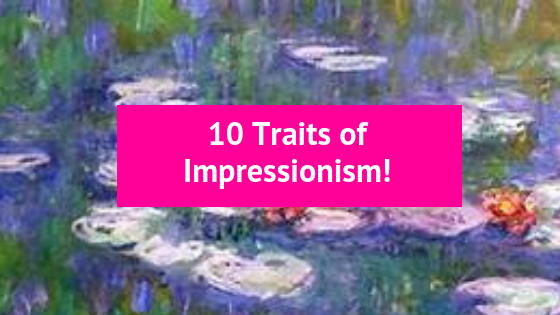
Part of the Impressionist idea was to capture a split second of life, an ephemeral moment in time on the canvas: the impression.
Lets look at a few more of the characteristics of Impressionism.
1. Bold Brush Strokes
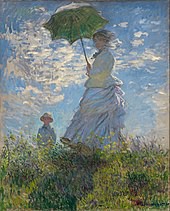
Thick short strokes of bright colour. This was to get a quick impression of the essence of the subject.
2. No Use Of Black
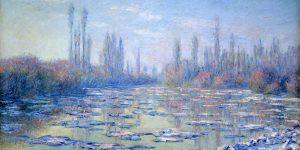
Pure impressionism avoids the use of black paint. Greys and dark colours are obtained by mixing contrasting colours together.
3. No Mixing of Paint
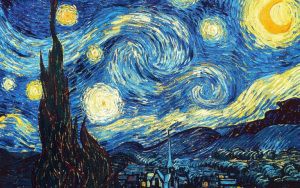
Colours are applied side-by-side with as little mixing as possible, a technique that exploits the principle of simultaneous contrast to make the colour appear more vivid.
4. Lighting
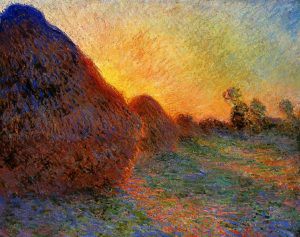
Several Impressionist painters devoted entire series of paintings to a single object observed during different times of the day. Monet?s haystacks are a perfect example of a dedication to lighting.
5. Influence of Photography
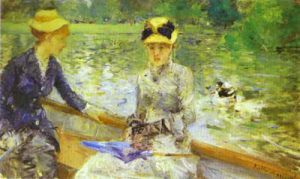
Photography made its appearance in the early nineteenth century and by the time of the Impressionists, technical advances had led to the development of the snapshot camera. Influences of this that can be seen in the paintings are the sense of capturing a fleeting moment, a snapshot of time.
6. Painting Outdoors
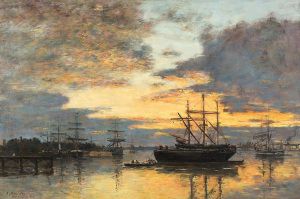
Thanks to the recent availability of pre-mixed paint, painters were able to move outside. In paintings made en plein air, shadows are boldly painted with the blue of the sky as it is reflected onto surfaces, giving a sense of freshness previously not represented in painting. (Blue shadows on snow inspired the technique.)
7. Japanese Print Influence

The influence of Japanese ukiyo-e art prints is evident in Impressionism in it?s asymmetrical composition and off-guard moments captured.
8. Everyday Paintings of Life
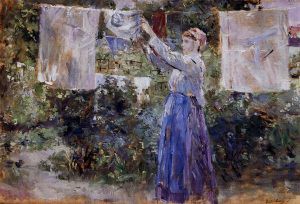
The Impressionist painted women doing the washing and ironing, ballet dancers limbering up, horses getting ready for a race and bored-looking waitresses. Nobody, before the Impressionists, had ever thought that these subjects were interesting enough to paint.
9. Landscapes

Although many Impressionists painted portraits, they are known for their landscapes. Thanks to being the first painters enabled to paint outside, they didn?t simply want to paint the shapes of the landscape but were more interested in capturing the light and the weather.
10. Small Paintings

Most Impressionist landscape paintings are small so that the artist could carry them outdoors. Claude Monet would often take several canvases and paint the same subject at various times in the day.
Now You Are An Expert On The Impressionists..
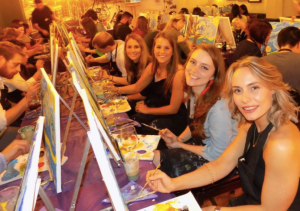
..come and set your own bold brush strokes to the canvas with a glass of wine!


